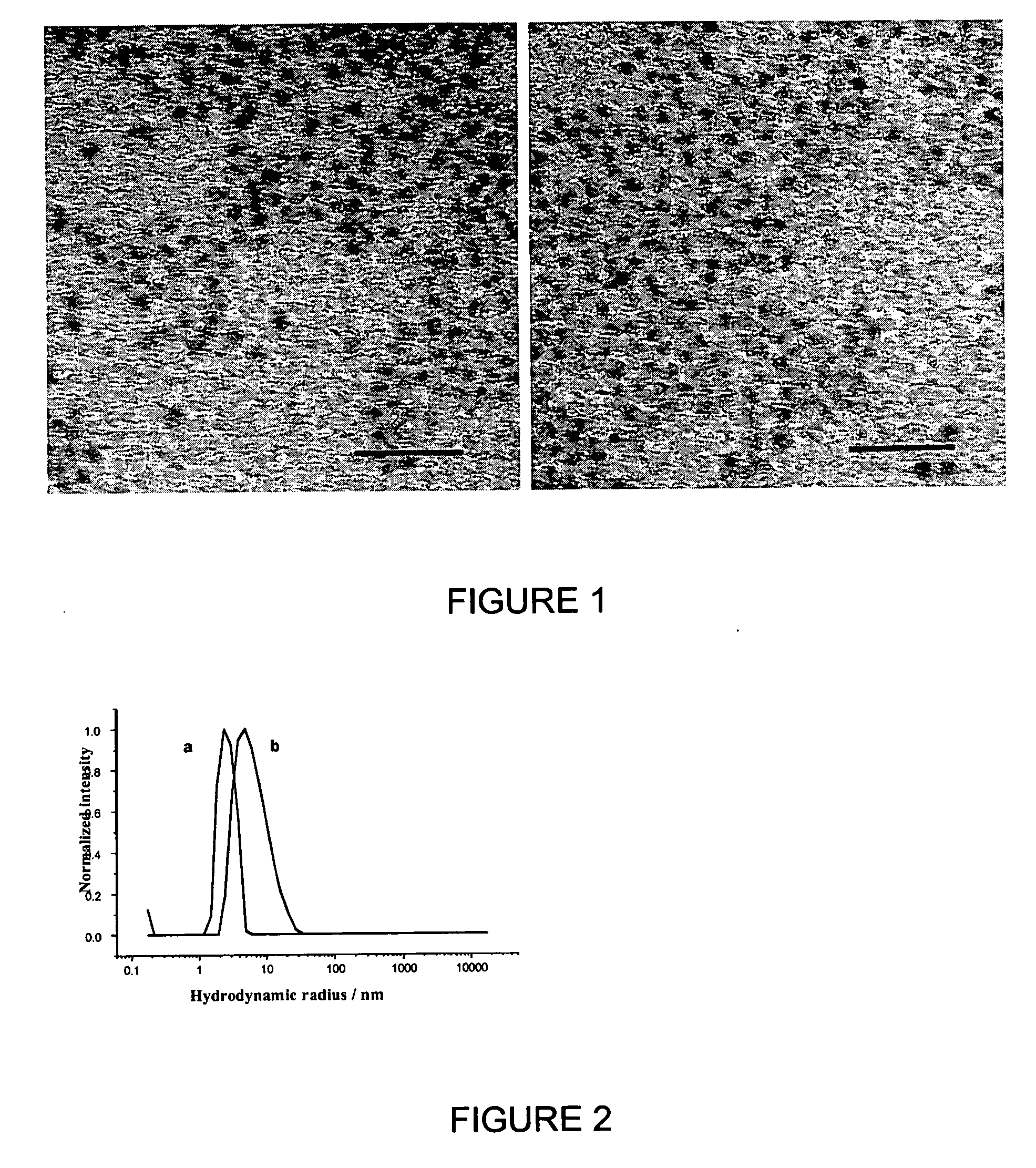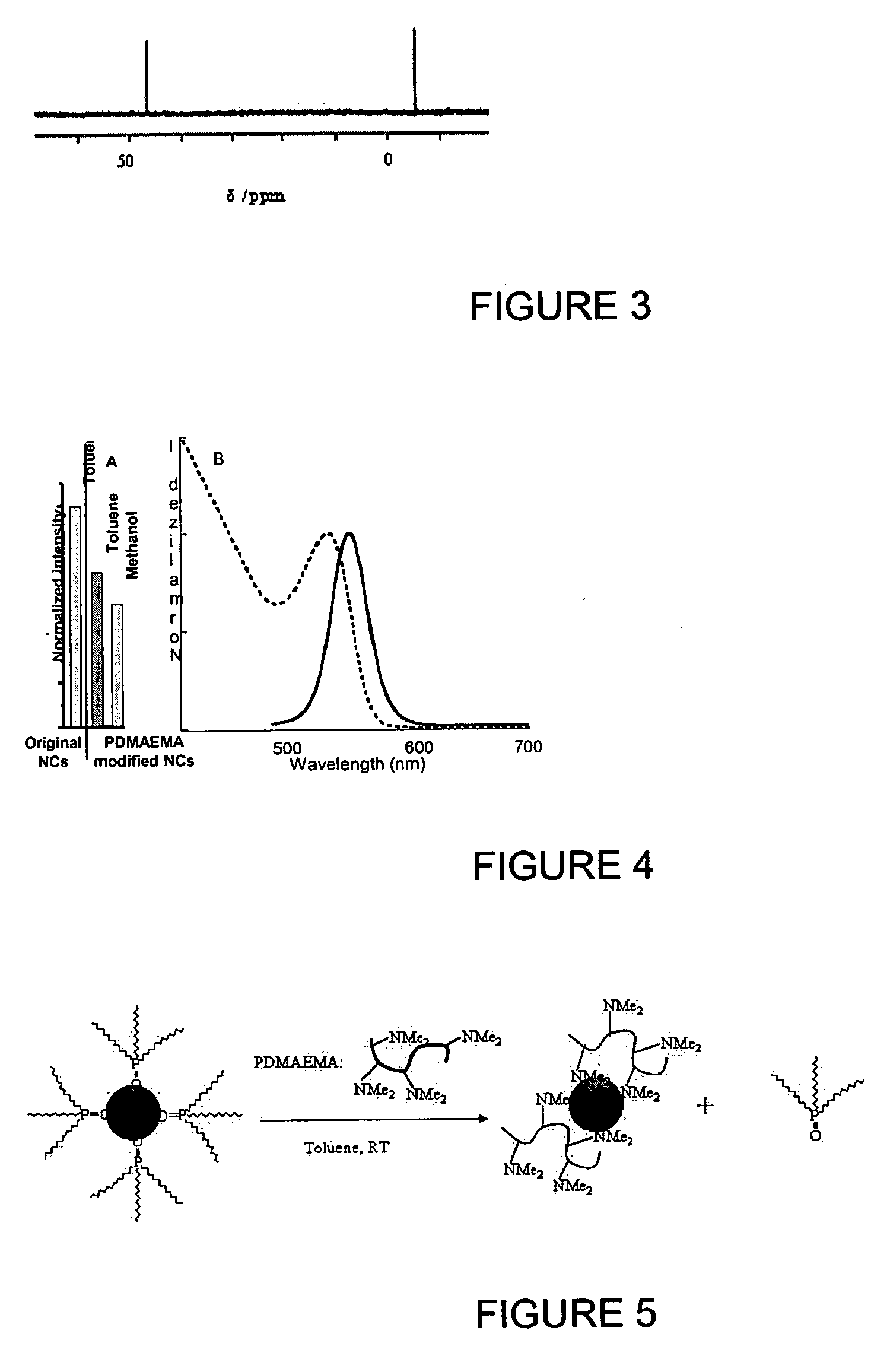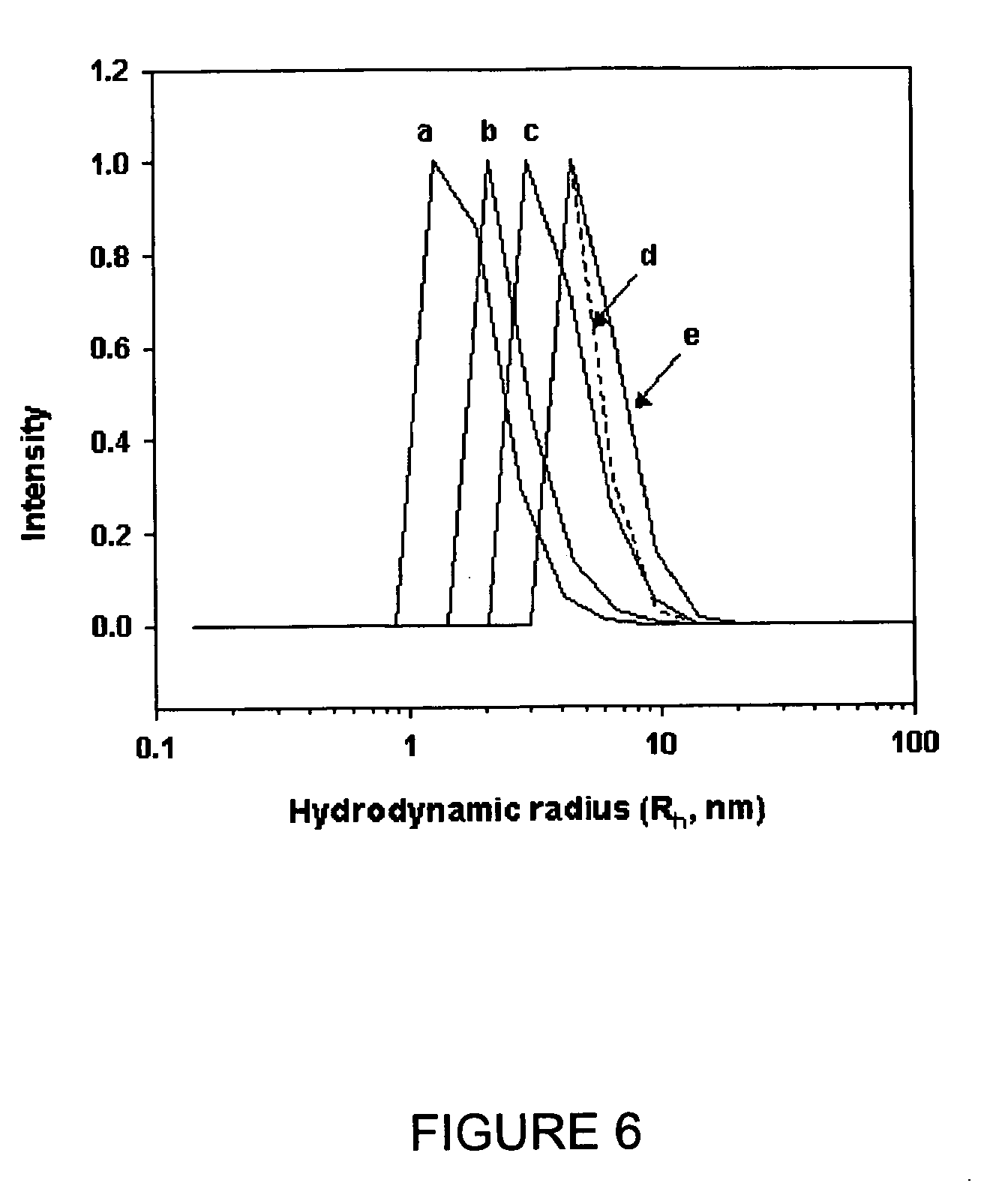Surface modification of nanocrystals using multidentate polymer ligands
a polymer ligand and nanocrystal technology, applied in the field of surface modification of colloidal quantum nanoparticles using polymer multidentate ligands, can solve the problems of reducing the photoluminescence qy relative to the original ncs, unstable particles and aggregation, and not being suitable or robust enough for many applications
- Summary
- Abstract
- Description
- Claims
- Application Information
AI Technical Summary
Benefits of technology
Problems solved by technology
Method used
Image
Examples
example 1
Synthesis of PDMAEMA By Controlled Radical Polymerization (ATRP)
[0052] To a reaction flask, methyl 2-bromopropionate (173 mg, 1.0 mmol), dimethylaminoethylmethacrylate (4.5 g, 28.6 mmol), and water / isopropanol (1:1 by volume) were added. The water / isopropanol solution was degassed through one freeze-thaw cycle. Then the copper catalyst complex (cuprous chloride / bipyridine (1:2)) was added to start the polymerization. After 4 h at 22° C., the solution was cooled to room temperature, diluted by adding THF, and passed through a silica column to remove the blue copper catalyst. A white gum-like product was obtained after removing solvent and drying overnight at 50° C. in a vacuum oven. The polymer was characterized by gel permeation chromatography (GPC) using polystyrene standards, and shown to have a number-averaged degree of polymerization of 30 and a polydispersity index (PDI) of 1.3.
example 2
Synthesis of CdSe / ZnS
[0053] For CdSe / ZnS core-shell synthesis, all chemicals used in this synthesis were purchased from Aldrich, except for dimethyl cadmium and dimethyl zinc, which were purchased from Strem. Trioctylphosphine oxide (TOPO, 7.5 g) was dried and degassed by heating under vacuum to 150° C. for 30 min. The temperature was then raised to 320° C. under approximately 1 atm of Ar. Once the temperature had stabilized, a solution of Cd / Se / TOP (TOP: trioctylphosphine), prepared by mixing 45 μL of dimethylcadmium, 1 mL of 1M Se in TOP and 4 mL of TOP, was injected rapidly into the reaction flask, and the heat was removed. The reaction mixture was allowed to cool to 240° C., then a small aliquot was extracted for characterization of the initial CdSe nanocrystals. The nanocrystals were grown at 240° C. to the desired size. Excess methanol was then added to the synthesized CdSe (in toluene) to precipitate the nanocrystals and remove the excess phosphine ligands. The nanocrystals ...
example 3
Synthesis of PDMAEMA By Conventional Free Radical Polymerization
[0054] A series of samples of PDMAEMA were synthesized by conventional batch solution polymerization of DMAEMA in toluene at 95° C., initiated with , 2,2-azobis (2-methylbutyronitrile (AMBN, VAZO V-59). Dodecanethiol (C12—SH) was introduced to control molar mass. As a typical example, the recipe for the synthesis of a sample (M7K-PDMAEMA) is summarized in Table 1. The specific procedure is described below: In a 100 mL of three-neck round-bottom flask provided with a magnetic stirrer and condenser, DMEAMA (20 g), AMBN (0.2 g, 1 wt % of DMAEMA), and C12—SH(0.46 mL, 2 wt % of DMAEMA) were dissolved in toluene (24 g) to form a homogeneous clear solution. The flask was capped with rubber septa, and then the flask was immersed into an oil bath pre-heated to 95° C. The polymerization reaction was run under an N2 atmosphere. It was maintained at 95° C. for 2.5 h, and then cooled to room temperature. This reaction produced a so...
PUM
| Property | Measurement | Unit |
|---|---|---|
| Diameter | aaaaa | aaaaa |
| Diameter | aaaaa | aaaaa |
| Fraction | aaaaa | aaaaa |
Abstract
Description
Claims
Application Information
 Login to View More
Login to View More - R&D
- Intellectual Property
- Life Sciences
- Materials
- Tech Scout
- Unparalleled Data Quality
- Higher Quality Content
- 60% Fewer Hallucinations
Browse by: Latest US Patents, China's latest patents, Technical Efficacy Thesaurus, Application Domain, Technology Topic, Popular Technical Reports.
© 2025 PatSnap. All rights reserved.Legal|Privacy policy|Modern Slavery Act Transparency Statement|Sitemap|About US| Contact US: help@patsnap.com



